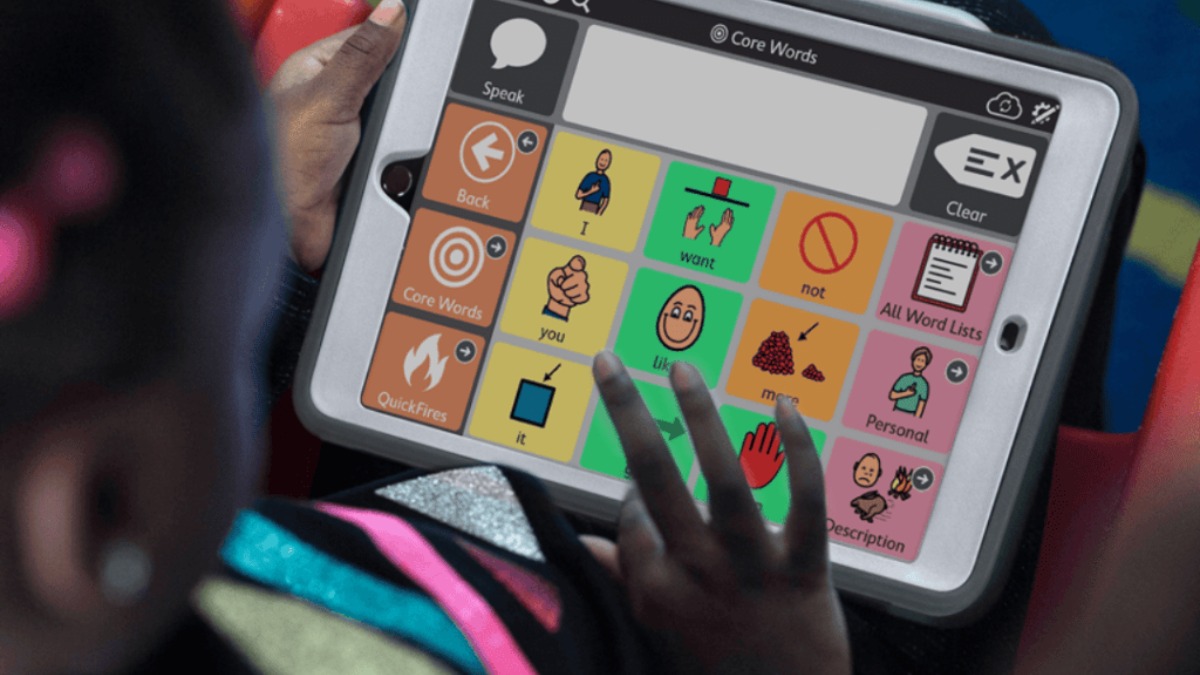Addressing DIRFloortime Skepticism
November 21, 2024
Explore addressing DIRFloortime skepticism with insights on effectiveness, research, and benefits for children.
.jpg)
Understanding DIRFloortime
Introduction to DIR
DIRFloortime is a therapeutic approach designed to support children diagnosed with autism and other developmental delays. Developed by psychiatrist Dr. Stanley Greenspan in the 1980s, this model is rooted in the Developmental Individual-difference Relationship-based (DIR) framework. DIRFloortime aims to foster a child’s emotional, social, and intellectual growth by addressing their unique developmental needs while enhancing parent-child interactions. At its core, DIRFloortime emphasizes understanding how individual differences affect a child's development and focusing on their emotional relationships.
Core Principles of Floortime
Floortime is characterized by a child-led approach, encouraging therapists, parents, and caregivers to follow the child’s lead during interactions. The goal is to promote a sense of empowerment, encouraging children to actively participate in their therapy sessions [1]. This method supports the development of six key milestones vital for emotional and intellectual growth:
MilestoneDescription1. Shared AttentionEngaging in joint attention and play with others.2. Emotional ResponsesExpressing feelings and emotions appropriately.3. Two-Way CommunicationDeveloping back-and-forth communication skills.4. Complex InteractionsEngaging in more sophisticated social interactions.5. Problem-SolvingMaking decisions and solving various situations.6. Self-UnderstandingGaining awareness of one's feelings and thoughts.
Floortime is not only about direct intervention; it also helps parents learn how to direct their children towards more complex interactions by building on their strengths and encouraging them to push towards their full potential.
For more insights into how DIRFloortime meets established therapy standards, explore our article on how DIR floortime meets therapy standards and the evidence supporting this therapy in our piece on evidence-based practice of DIR floortime. Understanding DIRFloortime as a holistic approach allows caregivers to address both immediate developmental challenges and foster long-term growth in children with autism.
Effectiveness of DIRFloortime
Research Supporting Floortime
DIRFloortime is grounded in research demonstrating its effectiveness in enhancing developmental skills in children diagnosed with autism. Studies show that it has the strongest research base of any intervention, particularly in improving critical challenges such as relating, interacting, and communicating. Furthermore, this method has been shown to positively affect parent-child relationships and reduce caregiver stress [3].
Multiple randomized-controlled studies published since 2011 have identified statistically significant improvements in children utilizing Floortime compared to traditional behavioral methods. A notable study by Solomon et al. in 2007 revealed significant growth in children's Functional Developmental Capacities, along with high satisfaction levels among parents using Floortime programs.
The following table summarizes key studies related to DIRFloortime:
StudyYearFindingsSolomon et al.2007Statistically significant improvement in Functional Developmental Capacities and high parental satisfaction.Various Randomized-Controlled Trials2011-PresentIdentified significant improvements in children with autism using Floortime versus traditional approaches.
DIRFloortime has garnered recognition for its cost-effectiveness as well. The average cost for DIRFloortime interventions is approximately $5,000 per child annually, significantly lower than other therapy programs that typically require 20–30 hours of weekly treatment [3].
Comparison with ABA
The comparison between DIRFloortime and Applied Behavior Analysis (ABA) highlights both methods' effectiveness in improving developmental outcomes for children with autism. Research indicates that both approaches have contributed positively to skill development. However, DIRFloortime places a stronger emphasis on emotional and relational development by prioritizing interactions that foster secure emotional attachments.
Table 2 below outlines some key differences and similarities between DIRFloortime and ABA:
CharacteristicDIRFloortimeABAFocusEmotional and relational growthBehavioral modificationInteraction StyleChild-led, promotes free playStructured, goal-orientedParent InvolvementHigh, encourages positive parent-child interactionsModerate, focuses on therapist-led sessionsCostApprox. $5,000 per yearGenerally higher due to intense hours
Overall, both DIRFloortime and ABA have shown positive results, but families may choose DIRFloortime for its comprehensive approach to emotional development. For further information about addressing skepticism regarding DIRFloortime, refer to our article on DIR floortime evidence-based myths.
Implementing DIRFloortime
The DIRFloortime approach focuses on individual needs and developmental milestones, making it essential for parents, caregivers, and professionals to understand how to effectively implement this method. This section highlights the child-led approach and the recommended therapy settings and duration for DIRFloortime.
Child-Led Approach
The DIRFloortime model is fundamentally child-led. Developed by psychiatrist Dr. Stanley Greenspan and others in the 1980s, this approach emphasizes following the child’s lead to ensure they feel empowered and actively participate in their therapy sessions [2]. By engaging with the child through play and genuine interaction, parents and caregivers can foster an environment where the child feels comfortable exploring and expressing themselves.
This method encourages building a secure emotional connection, which is crucial for enhancing communication, emotional functioning, daily living skills, and parent-child interactions. Importantly, the child’s interests and motivations guide the therapy, making it a more meaningful and effective process.
Therapy Settings and Duration
DIRFloortime can be implemented in various settings, including home environments, preschools, or specialized therapy centers. The flexibility of therapy locations allows caregivers to integrate DIRFloortime techniques into daily routines, reinforcing skills during interactions in familiar surroundings. To achieve optimal results, consistent practice across these settings is recommended.
The duration and frequency of DIRFloortime therapy may vary based on the child’s individual needs and developmental goals. Generally, research suggests that engaging in several sessions weekly can lead to significant improvements. For example, a 2003 study highlighted Joey, a child on the autism spectrum, who made notable progress after participating in six daily Floortime sessions over three years [2].
Session DurationRecommended Sessions per WeekNotes30 minutes3-6Flexibility based on child’s engagement and progress1 hour2-5More intensive sessions can be beneficial2 hours1-2Ideal for thorough interactions and deep engagement
By tailoring the therapy duration and frequency to the child’s unique needs, caregivers can effectively promote growth and development in areas such as communication and emotional skills. For further information on the effectiveness of this approach, consult our article on what makes DIR Floortime effective?.
In summary, understanding and implementing a child-led approach, alongside appropriate therapy settings and durations, is vital for parents and caregivers utilizing DIRFloortime. This ensures a supportive environment for children with autism to thrive.
Cost and Coverage of DIRFloortime
Understanding the financial aspects of DIRFloortime therapy can help parents and caregivers make informed decisions regarding their children's care. This section focuses on insurance considerations and the availability of Floortime for young children.
Insurance Considerations
Insurance coverage for DIRFloortime varies. Medicaid plans are required to cover treatments deemed medically necessary for children under the age of 21, which includes Floortime when prescribed by a doctor. Private health insurance coverage for Floortime therapy can depend on the specific plan and the state in which the family resides.
Insurance TypeCoverage DetailsMedicaidMust cover medically necessary treatments for children under 21, including Floortime if recommended by a doctor.Private InsuranceCoverage varies by plan; some may include Floortime therapy for autism services.
Families are encouraged to check with their insurance providers to understand policy specifics and requirements. Resources like DIR floortime evidence-based myths might provide additional context regarding insurance standards.
Availability for Young Children
For young children, DIRFloortime can often be accessed through Early Intervention programs available in each state. These programs cater to children under the age of 3 who may not be developing at the same pace as their peers. Early Intervention provides a valuable opportunity for families to incorporate DIRFloortime techniques tailored to their child's specific needs.
Age GroupProgram AvailabilityUnder 3 yearsEarly Intervention programs provide access to Floortime therapy when developmental delays are identified.Ages 3-21Coverage through Medicaid or private insurance may support ongoing therapy needs.
As families explore options for DIRFloortime, they may find it helpful to review the evidence-based practice of DIR Floortime and how DIR floortime meets therapy standards to better understand its effectiveness and implications for their child's growth.
Benefits of DIRFloortime
The DIRFloortime approach offers numerous benefits for children diagnosed with autism, focusing on emotional development and the achievement of key milestones. This section explores the emotional and developmental growth facilitated by DIRFloortime and highlights the essential skills and milestones it promotes.
Emotional and Developmental Growth
The DIR/Floortime method, developed by psychiatrist Dr. Stanley Greenspan in the 1980s, has demonstrated significant advancements in a child's capabilities across various domains. These include communication, emotional functioning, daily living skills, and parent-child interactions. The therapy enhances emotional development by emphasizing the importance of emotion in cognitive growth [1].
Through DIRFloortime, caregivers are encouraged to follow the child's lead, engaging with them based on their interests and emotions. This not only aids in building strong relationships but also enables children to explore and challenge themselves, thereby reaching their full potential. By focusing on emotional engagement, the therapy fosters a supportive environment where children can comfortably navigate their feelings, leading to overall developmental progress.
Key Milestones and Skills
DIRFloortime focuses on helping children achieve six key milestones that contribute to their emotional and intellectual growth. These milestones include:
These milestones emphasize expanding a child’s "circles of communication," reflecting a holistic approach rather than working on isolated skills like speech, motor, or cognitive functions.
The effectiveness of DIRFloortime depends significantly on the engagement and knowledge of parents. Research indicates that factors such as parental demographics and attitudes toward autism impact the quality and outcome of the therapy [4]. Parents who are informed and actively involved can better facilitate their child's progress through this therapeutic approach.
In conclusion, DIRFloortime promotes substantial emotional and developmental growth while guiding children towards crucial skills and milestones necessary for their overall development. For further insights into the effectiveness of this approach, consider exploring what makes DIR floortime effective?.
Addressing Skepticism
Skepticism surrounding DIRFloortime often arises from concerns regarding research limitations and the need for future studies to evaluate its efficacy. Here, we explore these aspects in detail.
Research Limitations
Research on the use of DIRFloortime to treat Autism Spectrum Disorders (ASD) is still limited. Existing findings often lack empirical validity. Many studies focus primarily on training parents and therapists to implement Floortime interventions and assessing fidelity, rather than evaluating standardized measures of development or language [5].
Despite showing some positive outcomes, there are notable concerns regarding the limitations of research methodologies, such as the absence of experimental control and rigorous validity. Although certain findings indicate substantial progress in various functional areas of autistic children who participate in Floortime therapy, further comprehensive studies are necessary to substantiate these claims.
Research AspectFindingsEmpirical ValidityLimited evidence and lack of standardized measuresFocus of StudiesPrimarily training for parents/therapistsPositive OutcomesSome progress in emotive functioning and communication PubMed
Future Research Needs
To enhance the credibility of DIRFloortime, future research must focus on more rigorous studies that evaluate the efficacy of the approach as a treatment for children with ASD. Investigations should utilize established methods to assess the impact on developmental outcomes and language skills. Only through such studies can the field gain a clearer understanding of how DIRFloortime influences various aspects of children’s development.
There is also a need to identify specific factors that contribute to successful outcomes in FLOORTIME. Understanding parent-child interaction dynamics and how demographic factors influence therapy results can offer insights into optimizing the approach. Additionally, exploring the effects of DIR-based creative art therapies on social and emotional skills will enrich the existing knowledge base.
In summary, while DIRFloortime has revealed beneficial impacts on autism treatment, systematic investigation and critical evaluation are essential to dispel doubts surrounding its effectiveness, paving the way for evidence-based practice and wider acceptance in the autism community. For more information regarding empirical evidence, refer to our article on evidence-based practice of DIR floortime.
Our experienced therapists offer personalized DIR Floortime services in New Jersey tailored to your child's unique needs, helping them grow emotionally, socially, and cognitively. Book a consultation to learn more about our approach and discover how we can support you and your child on this journey.
References
[2]:
[3]:
[4]:
[5]:
Recent articles






































































.jpg)


.jpg)






.jpg)











.jpg)
.jpg)

.jpg)
.jpg)
.jpg)



.jpg)
.jpg)
